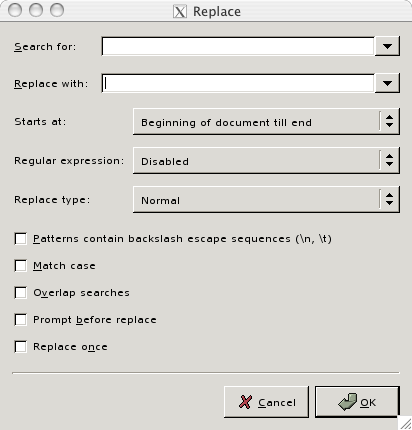

Check the Match Case box (you may have to click the button in the lower left corner of the dialog to expand the window]ĪI: Artificial Intelligence or Automated Idiocy? Please mark Yes/No as to whether a Reply answers your question. In this chapter, we will discuss the Find and Replace operation in Word 2010.Type lower case t in the Replace with box.Type a capital T into the Find what box.Method #2 - Edit> Find> Advanced Find & Replace - Replace

Replace button instead to go from one instance to the next Bonus Tip: Microsoft word also has a keyboard shortcut Highlight the text you wish to modify then while holding down the Shift key tap the F3 key (tap it again to. Upper will become lower, lower will become upper. tOGGLE cASE will change the case of every letter selected. :s/foo/bar/gci: Change each foo (case insensitive due to the i flag). Click either the Replace All button or use the Capitalize Each Word will put a capital letter at the start of each word. Change only whole words exactly matching foo to bar ask for confirmation.Match case: Makes your search case-sensitive. Optional: Narrow your search by using an option below. To see the next time the word is used, click Find again. Click the gear button between the 2 boxes to confirm that Next to 'Find,' type the word you want to find, If you want to replace the word, enter the new word next to 'Replace with.' To search for the word, click Find.Click either the Replace All button or use the Replace button instead to go from one instance to the next. Click the gear button between the 2 boxes to confirm that Ignore Case is not checked. Type lower case t in the Replace With box. Type lower case t in the Replace With box Type capital T in the Search Document box.Type capital T in the Search Document box.Assuming there aren't some instances to be converted & others not, it should be rather simple with either For some reason, case sensitivity is the default for the first but not for the second. If the strings are equal, we will return the message box with the message Two. This is the code: In the example, we want to compare the strings from the A1 and B1. First, we will look at the standard VBA behavior without this option set. Search Pane of the Sidebar as well as theĪdvanced Find & Replace dialog. In order to make VBA case-insensitive, you need to put Option Compare Text at the beginning of the module.

#Cap sensitive search and replace in word how to#
The last session has introduced how to carry out the case insensitive string comparison using the lower() method. even with vbaNon case sensitive search case sensitive replace. Case Insensitive String Comparison With the upper() Method.


 0 kommentar(er)
0 kommentar(er)
